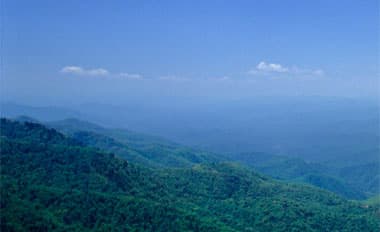Wood Species 101: Educating Future Generations on Hardwood Plywood
- May 29, 2024
- •
- by Columbia Forest Products
Columbia Forest Products is proud to announce the rollout of a new video series, Wood Species 101, that seeks to educate professionals and the public about the most popular hardwood plywood species. This series reaffirms Columbia’s dedication to sharing useful and interesting information about hardwood plywood and the many wonderful attributes that make it an essential building material.
Watch the Full Video Series Here
Meet the Host
You may know Fred Mitchell from his years of work in materials in the forest products industry, or you may have first heard about him in last quarter’s Hardwood Herald. Either way, we are confident Fred’s awesome personality, years of education, practical experience in plywood, and love of the product will draw you in.
What Will Be Covered
This video series aims to introduce a wide variety of face veneer species. There will be a basic explanation of the species covered, where they’re found, typical use cases and unique attributes that separate them from other veneers. You’ll also hear about typical cutting and matching techniques that give these species their unique looks as hardwood plywood faces.
The Species Covered
As the premier North American manufacturer of hardwood plywood, with over 60 years of selling to pros and consumers alike, Columbia is emphasizing the sixteen most popular decorative veneer species to cover in this video series:
- Alder
- Aromatic Cedar
- Ash
- Basswood
- Beech
- Birch
- Cherry
- Fir
- Hickory
- Knotty Pine
- Mahogany
- Maple
- Poplar
- Red Oak
- Walnut
- White Oak
Columbia will also feature each species with “Species of the Month” content on social media. This content will provide viewers with additional insights into hardwood plywood species and give the opportunity to focus on them more deeply. We’ll also release blog posts related to the species spotlighted each month.
Glossary Terms to Know
Those interested in learning more about plywood species may want to review the following glossary for more context on some terms discussed throughout Wood Species 101:
Rotary Cut – Rotary cutting is the most popular method of peeling veneer. Many have likened it to paper towels being removed from a roll. Rotary cutting produces a wide ribbon of veneer with a variegated grain pattern.
Ray Fleck – All wood has rays, which exist at a right angle to growth rings. In most species, these rays are small and difficult to see with the naked eye. However, species like red and white oak have wider rays that are much more visible.
Plain Slice – A method of peeling veneer that creates a more pronounced grain. Plain slicing will result in a sawn lumber look, usually with cathedrals present.
Quarter Slice – Quarter slicing is identical to plain slicing, except for changing the orientation of the log’s growth rings to produce a straight grain. When quarter-slicing Red or White Oak, you will also see pronounced ray fleck.
Rift Cut – Rift cutting is done by avoiding undesirable characteristics from the center of the log. The resulting product will have a straight, narrow grain with minimized ray fleck.
Matching – Once a log is processed, the next step is to match up the panels of veneer and splice them together so that they can make a full panel.
Book Match – This is the most common type of matching. It is accomplished by turning every other piece of veneer over. This creates a mirror effect, allowing the grain pattern to flow across the width of the face in repeated columns.
Plank Match – This method of matching requires veneer of varying widths from different logs to be sliced together. Plank matching gives the panel a solid wood or lumber look. It also allows desired rustic features like knots to be evenly distributed.
Random Match – This type of match is typically utilized when there is no consideration for matching the color or grain. For instance, a back veneer.
Thanks to Ang Schramm and his book A Complete Guide to Hardwood Plywood and Face Veneer for contributing to this section.
The First Species: White Oak
For June, the species in the spotlight will be White Oak. It has increased in popularity over the past few years, partly because of popular HGTV personalities promoting it. It is prized for its Red Oak grain appearance and ability to take stain more consistently.





